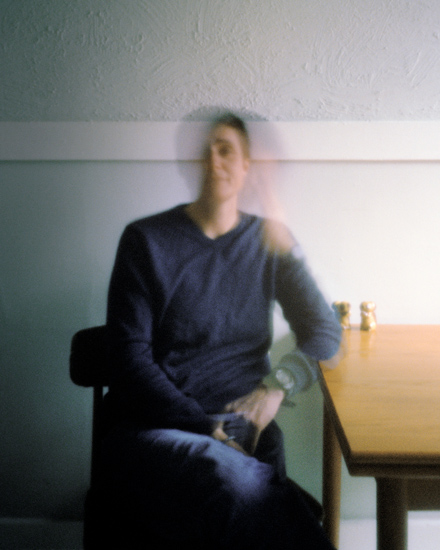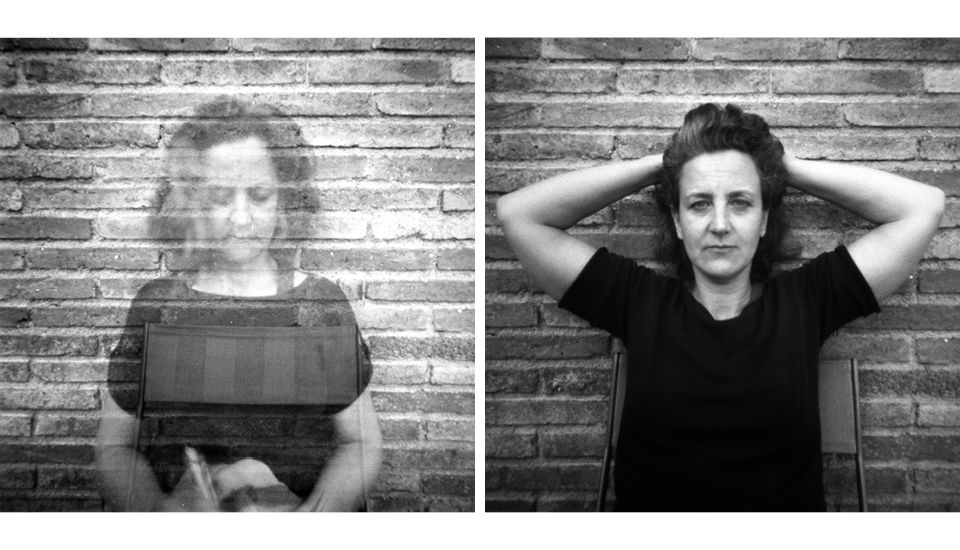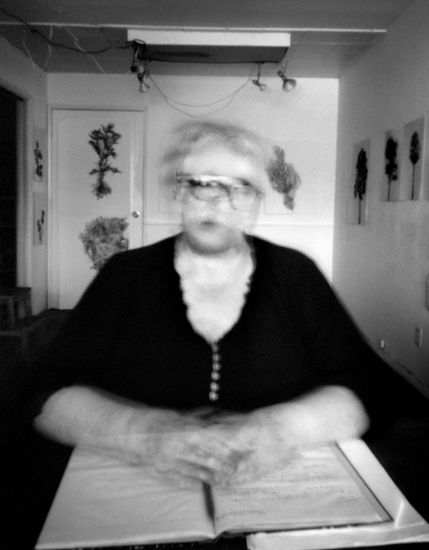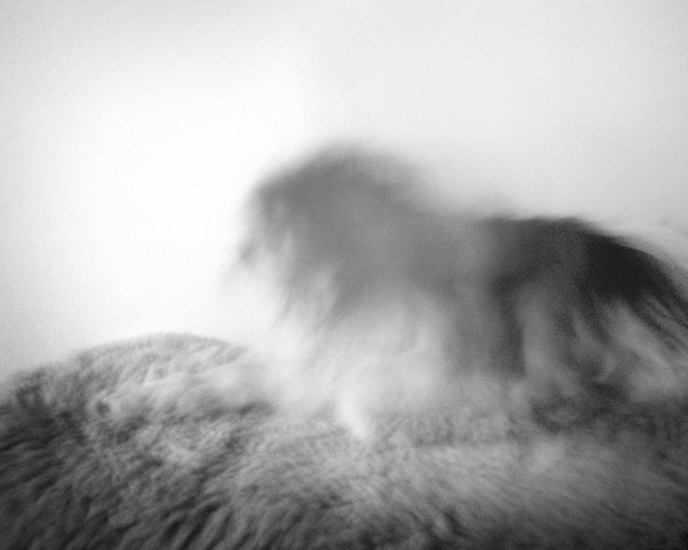Pinhole portraiture
I started shooting pinhole portraits with more intention while I was at an artist residency near Barcelona in 2015. I had already done a long exposure series called “Pinhole Diary” and many of those photographs featured myself and my friends moving, cleaning, sitting. I was compelled by how human action was captured in this photographic long form. Also around that time I fell in love with how Duane Michals uses multiple and long exposure to tell stories, and especially how he used erasure in his 1972 portrait of Joseph Cornell in a way that seemed sculptural to me.
Soon after, an instructor introduced me to the work of Michael Wesely and I was blown away by his years-long long exposure photographs of buildings being constructed and other slow-moving events in iconic locations. And he also takes long exposure portraits (not pinhole, however—he shoots with a lens). In the book Open Shutter, which accompanied his 2004 exhibition at MOMA, Sarah Hermanson Meister wrote of Wesely’s skepticism of the notion of a decisive moment:
Wesely wondered whether a longer exposure might not convey more about the subject than a single moment plucked from life by the photographer, and he intuited that, by having his subjects compose themselves over an extended period of time, he was inviting the possibility of a more complete likeness—one that would reveal not just what his subject looked like, but what it would have been like to be in his or her presence.
Then Meister adds:
What might be considered flaws are in fact an unfamiliar evidence.
Wesely’s and Meister’s logic fortified my interest in long exposure portraiture. Not only does durational photography allow us to inscribe “a more complete likeness,” I also like that it foregrounds the experience of being in relation to the subject of the portrait. Portraiture is interpersonal, a shared experience. So not only does a long exposure and its formal irregularities (blur, erasure, multiplicity) reveal more of the sitter in their own right, it can reveal something of their experience sitting for the portrait, of relating to me, or about the topic we are discussing during the sitting.
Unlike Wesely who switched to lenses in the 90s, I’m using pinhole so my images don’t have his compelling mix of detailed and blurry. Mine are mainly just blurry. Comics are another big influence for me. In Understanding Comics, Scott McCloud describes how when two people look directly at each other, they see “their partner’s features in vivid detail” and they also have a “constant awareness of his or her own face, but this mind-picture is not nearly so vivid; just a sketchy arrangement…a sense of shape…a sense of general placement.” He goes on to liken this “mind-picture” to the simplified drawings of people that are cartoons.
But what if photographs could represent this sketchy mind-picture? I wonder if blur can have a similar effect. What if we could look at a photo of how we see ourselves?











